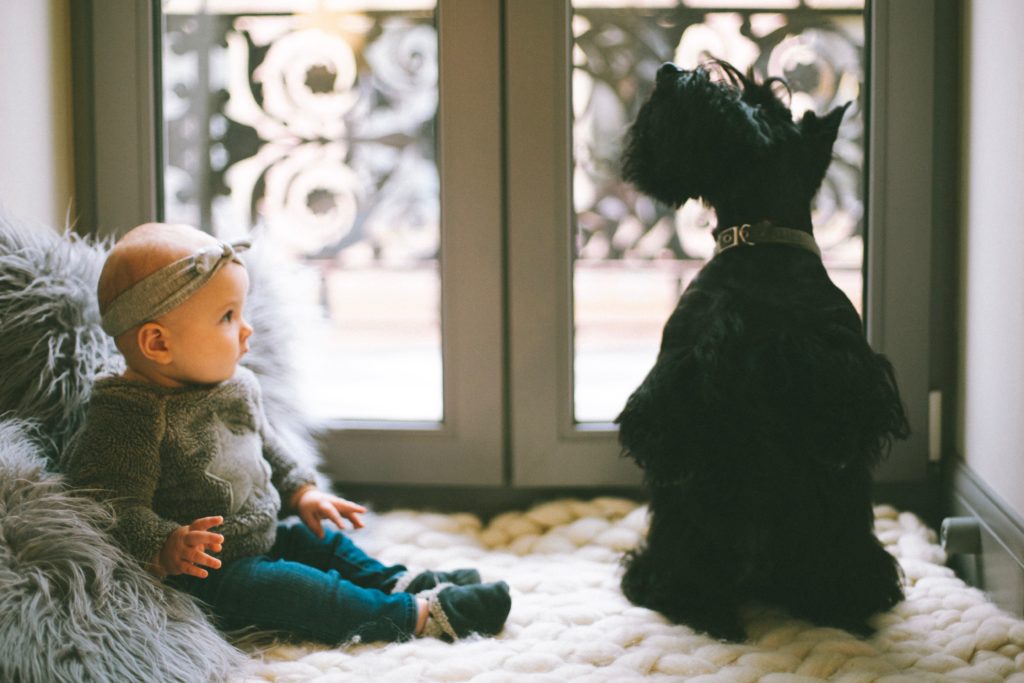Planning to have a baby? Or maybe you're expecting? Preparing your pup for a newborn can feel nerve-racking, but there's no need to stress.
With the help of RSPCA South Australia Dog Care Specialists, we've collated our top five tips to ensure your fur-baby and newborn get along as smoothly as possible.
1. Desensitize your fur-baby before your human-baby arrives
Although not scientifically proven, playing recordings of babies crying in the lead up to your due date can be a great way of enabling your pup to get used to the unusual sound.
You can find a number of baby sounds on YouTube. Our suggestion is to play the crying quietly when your dog is relaxed, and slowly adjust the volume louder each time.
Have some treats ready for when you play the clip and reward your pup so they learn the sound is an indicator of good things happening.
This will help your fur-baby ease into the time when they're ready to meet your newborn.
"Keep in mind all experiences need to be positive. The first time your pooch meets a young child, keep them on a lead and reinforce behaviour in a calm and positive manner, and reward with treats," says RSPCA South Australia Dog Training Coordinator Heather Bradley.
"It's best to keep interactions brief and of course, always under supervision."
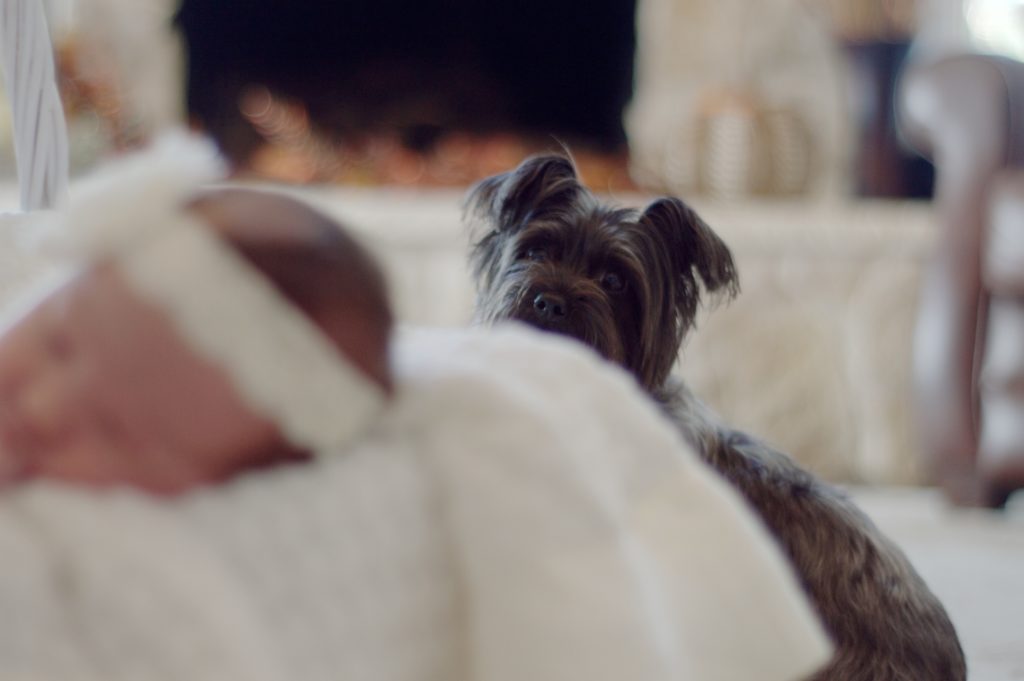
2. Plan and practice changes to your pup's daily routine
Many dogs can experience anxiety when their lifestyles are drastically altered. After having your bub, your schedule will often change and life can become a little unpredictable. So it helps to prepare your dog for a less consistent schedule each day.
It's a good idea to introduce some changes to your pup's daily schedule at least two months before your newborn arrives. This includes walking your dog at different times - try this on several different occasions across different time frames.
We also recommend feeding your fur-baby at different times too.
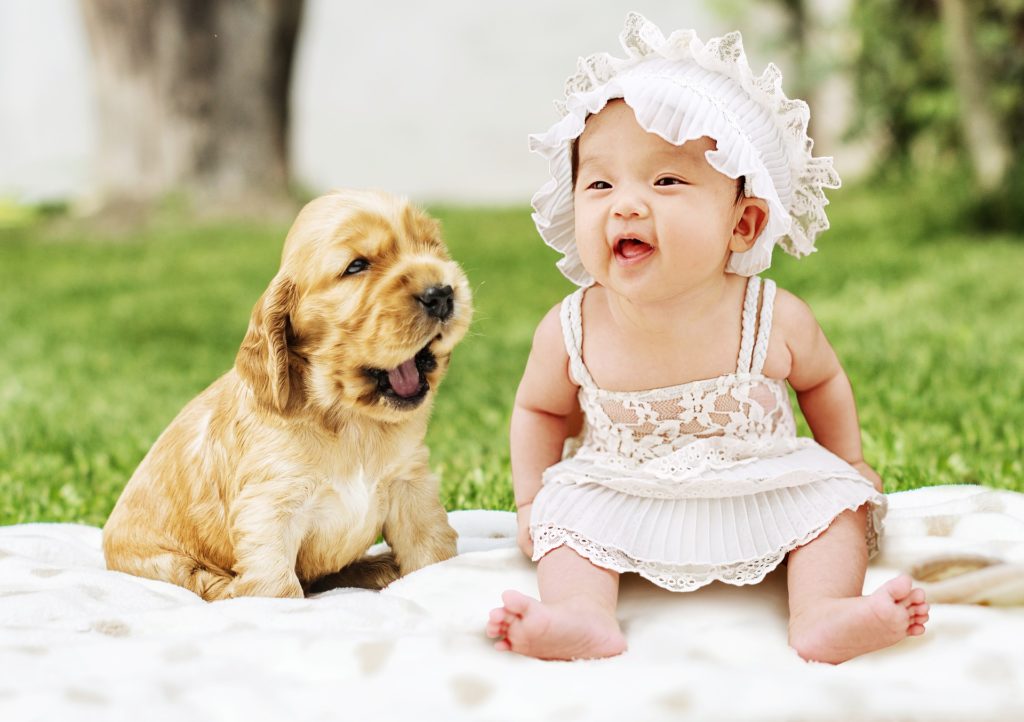
3. Learn to read your dog and consider a 'safe zone'
Be mindful of your dog and start to notice their likes and dislikes. Educate yourself about what signs your dog displays when they are happy or relaxed, and what their reactions are when they are anxious or uncertain.
We recommend having a safe zone for your pup for when they are feeling anxious or stressed.
"Make sure it's a quiet space where good things happen, don't shut them away," Heather says.
When your dog is feeling stressed - tell them to "go to your spot". This is a harm minimisation strategy that can help your pooch chill out when things get too overwhelming.
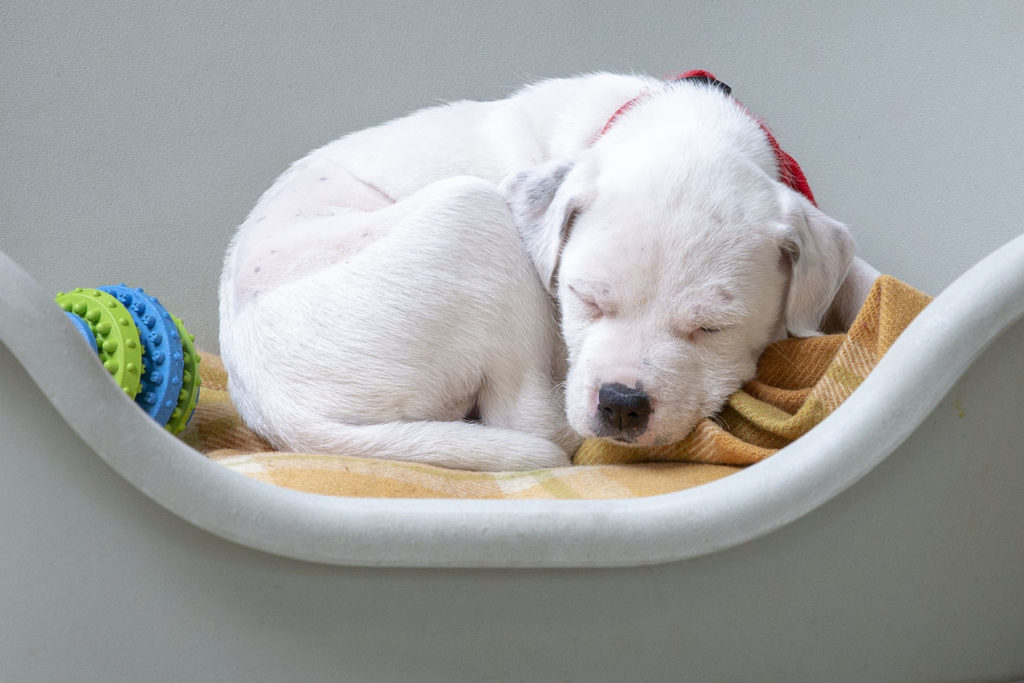
4. Control your surroundings - with toddler gates!
Once your bub starts learning to walk, a good way of minimising supervision is to separate spaces between your dog and your toddler. Toddler gates are great for this.
You don't need to do this for the whole house, but perhaps having one in your toddler's room will make parenting a little easier and less stressful.
It's also wise to accustom your pup to a new level of separation - gradual steps are best in doing so. Teaching your dog in advance about being separated will help to make this task easier on yourself and your pup once bub arrives.
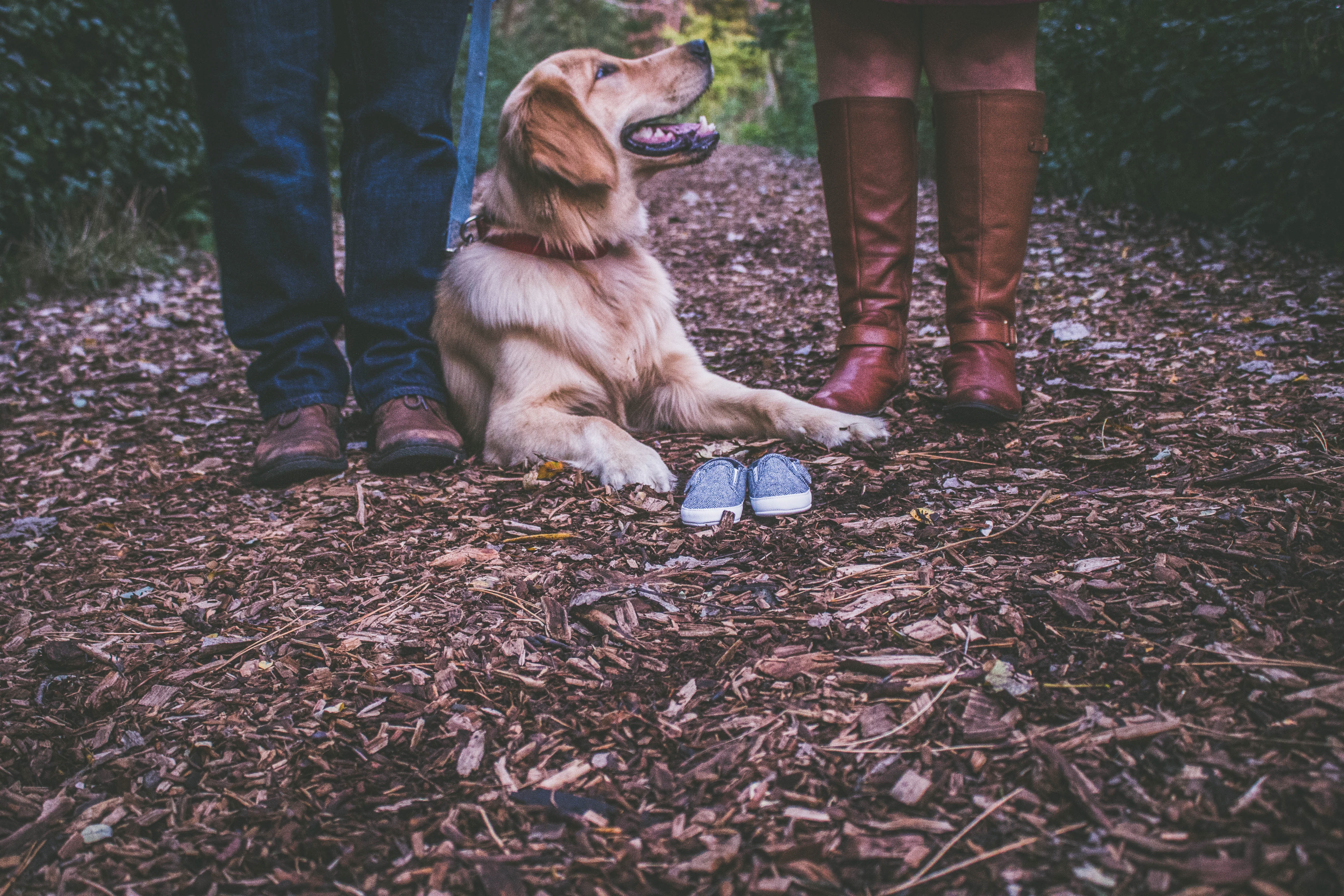
5. Teach your children to read a dog's behaviour
As your newborn becomes older, it's a great idea to teach your child to look for certain signs in a dog's behaviour. If your pup has its ears pricked back, tail tucked behind their legs, is yawning or licking their lips - chances are they are feeling scared or anxious. This can sometimes lead to mild forms of aggression, so teach your child to walk away. This is another harm minimisation strategy - especially if your child is meeting a new dog for the first time.
If your child is neither responding nor walking away, teach your pup to walk to their safe space and to ignore the child's behaviour.
Keep in mind that very young children have trouble reading dog body language even when taught, so active and educated adult supervision is key.
"Never leave your pooch and child unsupervised together," Heather says.
"Instead, teach your child how to interact with your dog so it's fun for both of them.
"Training, tricks and appropriate fetch or treat games are much more fun for your dog than hugs and kisses from your child."
If your child is having some new friends over and you're not sure how your pup will react, it is a good idea to leave your dog outside with a toy or treat for a small amount of time, and then bring your pup in afterwards.
Another top tip - don't let your child approach a dog if you're not sure how the dog will react.
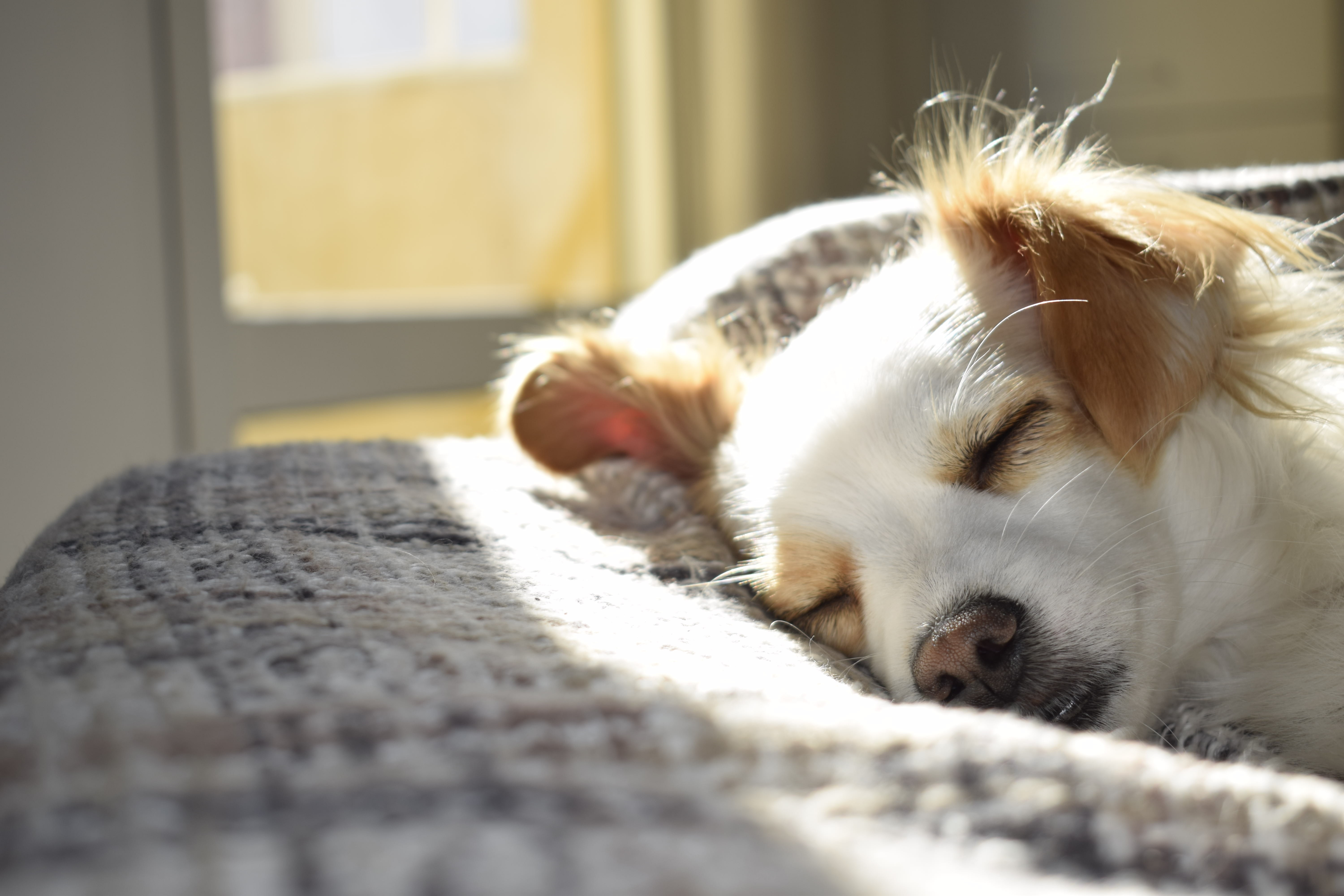
We hope our tips help you, your pooch and your child all ease into life together.
Have more questions? We now offer force-free dog training via our RSPCA Dog Training school. With a range of classes catering to puppies and adults (and their humans, of course), you'll walk away understanding exactly how to best communicate with your dog. Best of all, proceeds from our dog training classes go back towards helping animals in need!

